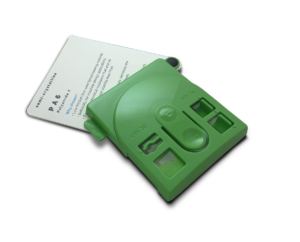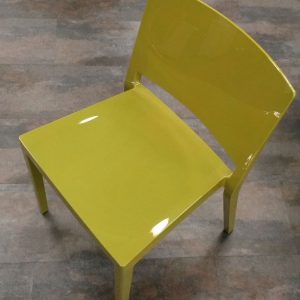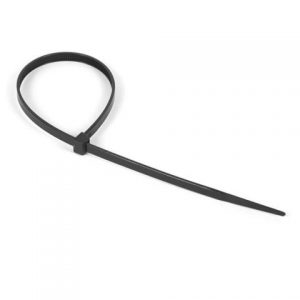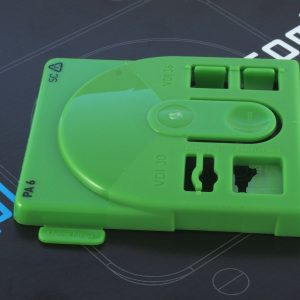
Polyamide is a semi-crystalline engineering plastic. Its stiffness, strength, wear resistance, and good friction properties make polyamide a popular material in machine design. The common weakness of PA is its tendency to absorb water – this influences the mechanical properties and dimensional accuracy of components.
There are several different types of polyamides, with slightly differing characteristics. The Plasticprop sample represents the very common PA6. The polyamide family also includes an amorphous grade, the transparent PA12.
The difference between PA6 and PA66 is small.
Why choose PA6?
- Good bearing properties; low friction, low wear. PA6 is known as “bearing material”.
- Good fatigue resistance
- Good impact resistance, even at low temperatures
- Excellent chemical resistance, especially against fuel and oil
- Good thermal resistance, better than POM
- Better dimensional accuracy than POM
- Better surface quality than POM
Why not choose?
- PA6 absorbs moisture which might decrease its strength and tensile modulus by half.
- The surface of the components feels slightly oily. This, in some cases, might not give the desired quality appearance.
Typical applications:
- Small technical parts in printers
- Screw anchors
- Stadium seats
Why choose PA66 over PA6?
- Slightly better short term thermal resistance
- Absorbs slightly less moisture
- Higher modulus
- Better wear resistance
- Better short term heat resistance
Why not choose?
- Higher price than PA6 (not dramatically, might be worth the money)
- For visual parts, PA6 has slightly better surface quality and processability
Typical applications:
- Cable ties
- Ski bindings
The differences are small, however, and in some circumstances, some of the items on the list above may be invalid, depending on the exact grade in use.
Some practical experiences of unfilled PA6/PA66:
- Water absorption is a well-known property of PA and worth taking into account. The difference can be felt when a product that has been stored outdoors over winter is taken indoors for a few days: its stiffness invariably increases.
- High-quality cable ties are made of PA66. This illustrates well the strength and toughness of the material. It also reveals that unfilled PA is suitable for applications that require high flexibility or even an integral hinge. Apart from cable ties, products made of unfilled PA66 are not very common. PA6 appears to be a much more popular choice.
- Because of its good surface appearance, PA6 is also often used (rather than amorphous plastics ABS, PC, PC/ABS) on the housings of some outdoor applications, for example, a lawnmower and a chainsaw
- Even though parts made of PA can have a glossy surface, replacing amorphous grades like ABS with PA might cause problems because of the higher shrinkage and therefore warpage.
Note: Both PA6 and PA66 require proper drying before processing.
By examining the Plasticprop sample made of PA6, you can draw the following conclusions:
- The surface gloss is excellent; in this respect, PA is comparable even to amorphous plastics. PA 6 is an especially glossy PA grade.
- The sample is very straight and the corner effect moderate. PA 6 is also easy to process, although this is a feature common to all polyamides.
- The integral hinge can be utilized. PA is used for making cable ties, for example.
- When knocking on the edge of a PA sample and then on the edge of a PBT or ABS sample, the sounds are close in pitch. But if a PA sample is soaked in warm water for a couple of hours and the test is repeated, the sound will be substantially lower. The stiffness of PA has decreased as a result of water absorption. A person with sensitive fingertips can even feel the difference.
- The sample is virtually sink-mark free even next to the thickest of ribs.
- Even the roughest spark-eroded surface has suffered very little from mould opening.


